Enhanced Tracer Particle Detection in Dynamic Bulk Systems Based on Polarimetric Radar Signature Correlation
Abstract
:1. Introduction
2. Fundamentals
2.1. Radar Cross-Section
2.2. Polarimetry
3. Scattering Characterization of Single and Packed Particles
3.1. Single Particle Scattering
3.2. Scattering of Packed Particle Assemblies
3.3. Tracer Particle Scattering
4. Setup and Methods
4.1. Measurement Setup
4.2. Characterization of Tracer and Bulk
- (1)
- One dipole axis aligns with the y-axis, and the other one with the z-axis of the coordinate system shown in Figure 16.
- (2)
- A 45° rotation is performed on both the x-axis and the y-axis in relation to the orientation of (1).
- (3)
- A 90° rotation is performed on the x-axis and a 45° rotation on the y-axis in relation to the orientation of (1).
4.3. Algorithm
5. Measurement Procedure and Results
6. Conclusions
Author Contributions
Funding
Institutional Review Board Statement
Informed Consent Statement
Data Availability Statement
Conflicts of Interest
Abbreviations
| BCC | body-centered cubic |
| DEM | discrete element method |
| ECT | electrical capacitance tomography |
| FMCW | frequency-modulated continuous-wave |
| GPR | ground penetrating radar |
| IFFT | inverse fast Fourier transformation |
| MIMO | multiple-input multiple-output |
| MPT | magnetic particle tracking |
| MRI | magnetic resonance imaging |
| MWT | microwave tomography |
| PA-6 | polyamide-6 |
| PEPT | positron emission particle tracking |
| PMMA | poly methyl methacrylate |
| POM | polyoxymethylene |
| RCS | radar cross-section |
| RMSE | root-mean-square error |
| RPT | radioactive particle tracking |
| SAR | synthetic aperture radar |
| SC | simple cubic |
| SNR | signal-to-noise ratio |
| STFT | short time Fourier transform |
| VBA | Visual Basic for Applications |
| VNA | vector network analyzer |
References
- Chaouki, J.; Larachi, F.; Dudukovic, M.P. Non-Invasive Monitoring of Multiphase Flows; Elsevier: Amsterdam, The Netherlands, 1997. [Google Scholar]
- Kawaguchi, T. MRI measurement of granular flows and fluid-particle flows. Adv. Powder Technol. 2010, 21, 235–241. [Google Scholar] [CrossRef]
- Wang, H.; Yang, W. Application of electrical capacitance tomography in circulating fluidised beds—A review. Appl. Therm. Eng. 2020, 176, 115311. [Google Scholar] [CrossRef]
- Babout, L.; Grudzien, K.; Wiacek, J.; Niedostatkiewicz, M.; Karpinski, B.; Szkodo, M. Selection of material for X-ray tomography analysis and DEM simulations: Comparison between granular materials of biological and non-biological origins. Granul. Matter 2018, 20, 38. [Google Scholar] [CrossRef]
- Hill, K.M.; Gioia, G.; Tota, V.V. Structure and Kinematics in Dense Free-Surface Granular Flow. Phys. Rev. Lett. 2003, 91, 064302. [Google Scholar] [CrossRef]
- Toiya, M.; Hettinga, J.; Losert, W. 3D Imaging of particle motion during penetrometer testing: From microscopic to macroscopic soil mechanics. Granul. Matter 2007, 9, 323–329. [Google Scholar] [CrossRef]
- Windows-Yule, C.; Seville, J.; Ingram, A.; Parker, D. Positron Emission Particle Tracking of Granular Flows. Annu. Rev. Chem. Biomol. Eng. 2020, 11, 367–396. [Google Scholar] [CrossRef]
- Rasouli, M.; Bertrand, F.; Chaouki, J. A multiple radioactive particle tracking technique to investigate particulate flows. AIChE J. 2015, 61, 384–394. [Google Scholar] [CrossRef]
- Buist, K.A.; van der Gaag, A.C.; Deen, N.G.; Kuipers, J.A.M. Improved magnetic particle tracking technique in dense gas fluidized beds. AIChE J. 2014, 60, 3133–3142. [Google Scholar] [CrossRef]
- Mallach, M.; Gebhardt, P.; Musch, T. 2D microwave tomography system for imaging of multiphase flows in metal pipes. Flow Meas. Instrum. 2017, 53, 80–88. [Google Scholar] [CrossRef]
- Wu, Z.; Wang, H. Microwave Tomography for Industrial Process Imaging: Example Applications and Experimental Results. IEEE Antennas Propag. Mag. 2017, 59, 61–71. [Google Scholar] [CrossRef]
- Laviada, J.; Wu, B.; Ghasr, M.T.; Zoughi, R. Nondestructive Evaluation of Microwave-Penetrable Pipes by Synthetic Aperture Imaging Enhanced by Full-Wave Field Propagation Model. IEEE Trans. Instrum. Meas. 2019, 68, 1112–1119. [Google Scholar] [CrossRef]
- Wu, B.; Gao, Y.; Laviada, J.; Ghasr, M.T.; Zoughi, R. Time-Reversal SAR Imaging for Nondestructive Testing of Circular and Cylindrical Multilayered Dielectric Structures. IEEE Trans. Instrum. Meas. 2020, 69, 2057–2066. [Google Scholar] [CrossRef]
- Chen, C.C. Fully-polarimetric ground penetrating radar application. In Proceedings of the IEEE Antennas and Propagation Society International Symposium, 2001 Digest, Boston, MA, USA, 8–13 July 2001; Held in conjunction with: USNC/URSI National Radio Science Meeting (Cat. No.01CH37229), 2001. Volume 4, pp. 604–607. [Google Scholar] [CrossRef]
- Chen, C.C.; Higgins, M.; O’Neill, K.; Detsch, R. Ultrawide-bandwidth fully-polarimetric ground penetrating radar classification of subsurface unexploded ordnance. IEEE Trans. Geosci. Remote Sens. 2001, 39, 1221–1230. [Google Scholar] [CrossRef]
- Kabourek, V.; Černý, P.; Mazánek, M. Landmine detection using ground penetrating radar and polarimetric Synthetic Aperture Radar. In Proceedings of the 5th European Conference on Antennas and Propagation (EUCAP), Rome, Italy, 11–15 April 2011; pp. 34–38. [Google Scholar]
- Clavero, V.O.; Solano, J.L.; Silla, R.S.; Schröder, W.; Schüssele, L. Compact Semi-Circular MIMO Radar System for the Fast Detection of Small Particles Approaching the Rayleigh Scattering Region. In Proceedings of the 2019 IEEE Asia-Pacific Microwave Conference (APMC), Singapore, 10–13 December 2019; pp. 1393–1395. [Google Scholar] [CrossRef]
- Hill, K.; Fan, Y.; Zhang, J.; Van Niekerk, C.; Zastrow, E.; Hagness, S.; Bernhard, J. Granular segregation studies for the development of a radar-based three-dimensional sensing system. Granul. Matter 2010, 12, 201–207. [Google Scholar] [CrossRef]
- Van Niekerk, C.; Zastrow, E.; Hagness, S.C.; Bernhard, J.T. UWB radar target sensing and imaging for granular materials research applications. In Proceedings of the 2010 IEEE Antennas and Propagation Society International Symposium, Toronto, ON, Canada, 11–17 July 2010; pp. 1–4. [Google Scholar] [CrossRef]
- Schorlemer, J.; Schenkel, F.; Hilse, N.; Schulz, C.; Barowski, J.; Scherer, V.; Rolfes, I. Radar-Based Particle Localization in Densely Packed Granular Assemblies. Processes 2023, 11, 3183. [Google Scholar] [CrossRef]
- Riegger, S.; Wiesbeck, W. Wide-band polarimetry and complex radar cross section signatures. Proc. IEEE 1989, 77, 649–658. [Google Scholar] [CrossRef]
- Dybdal, R. Radar cross section measurements. Proc. IEEE 1987, 75, 498–516. [Google Scholar] [CrossRef]
- Ludwig, A. The definition of cross polarization. IEEE Trans. Antennas Propag. 1973, 21, 116–119. [Google Scholar] [CrossRef]
- Aboserwal, N.A.; Salazar, J.L.; Ortiz, J.A.; Díaz, J.D.; Fulton, C.; Palmer, R.D. Source Current Polarization Impact on the Cross-Polarization Definition of Practical Antenna Elements: Theory and Applications. IEEE Trans. Antennas Propag. 2018, 66, 4391–4406. [Google Scholar] [CrossRef]
- Cloude, S.; Pottier, E. A review of target decomposition theorems in radar polarimetry. IEEE Trans. Geosci. Remote Sens. 1996, 34, 498–518. [Google Scholar] [CrossRef]
- Kutz, J.N. Data-Driven Modeling & Scientific Computation: Methods for Complex Systems & Big Data; OUP Oxford: Oxford, UK, 2013. [Google Scholar]
- Stratton, J. Electromagnetic Theory. In IEEE Press Series on Electromagnetic Wave Theory; Wiley: Hoboken, NJ, USA, 2007. [Google Scholar]
- Tzarouchis, D.; Sihvola, A. Light Scattering by a Dielectric Sphere: Perspectives on the Mie Resonances. Appl. Sci. 2018, 8, 184. [Google Scholar] [CrossRef]
- Skolnik, M. Radar Handbook, 2nd ed.; McGraw-Hill: New York, NY, USA, 1990. [Google Scholar]
- Flaischlen, S.; Wehinger, G.D. Synthetic Packed-Bed Generation for CFD Simulations: Blender vs. STAR-CCM+. ChemEngineering 2019, 3, 52. [Google Scholar] [CrossRef]
- Hattenhorst, B.; Van Delden, M.; Schenkel, F.; Schorlemer, J.; Barowski, J.; Rolfes, I.; Musch, T. Tracer Particles with Encapsulated Resonators for Electromagnetic Localization and Tracking in Moving Bulk Materials. In Proceedings of the 2023 International Conference on Electromagnetics in Advanced Applications (ICEAA), Venice, Italy, 9–13 October 2023; pp. 426–431. [Google Scholar] [CrossRef]
- Riddle, B.; Baker-Jarvis, J.; Krupka, J. Complex permittivity measurements of common plastics over variable temperatures. IEEE Trans. Microw. Theory Tech. 2003, 51, 727–733. [Google Scholar] [CrossRef]
- Read, B.; Williams, G. The dielectric and dynamic mechanical properties of polyoxymethylene (Delrin). Polymer 1961, 2, 239–255. [Google Scholar] [CrossRef]
- Sihvola, A.; Kong, J. Effective permittivity of dielectric mixtures. IEEE Trans. Geosci. Remote Sens. 1988, 26, 420–429. [Google Scholar] [CrossRef]
- Piotrowsky, L.; Jaeschke, T.; Kueppers, S.; Siska, J.; Pohl, N. Enabling High Accuracy Distance Measurements With FMCW Radar Sensors. IEEE Trans. Microw. Theory Tech. 2019, 67, 5360–5371. [Google Scholar] [CrossRef]


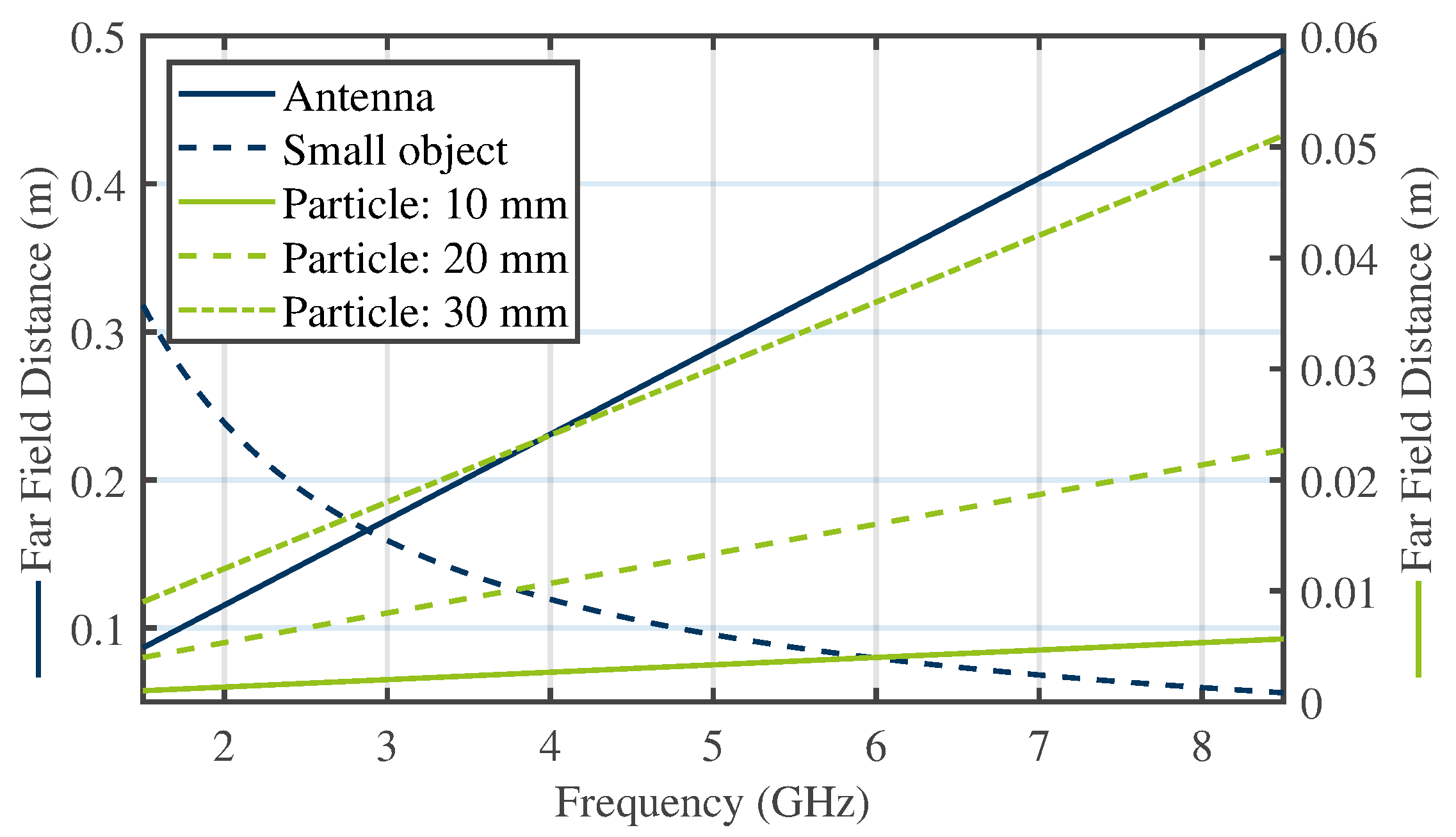


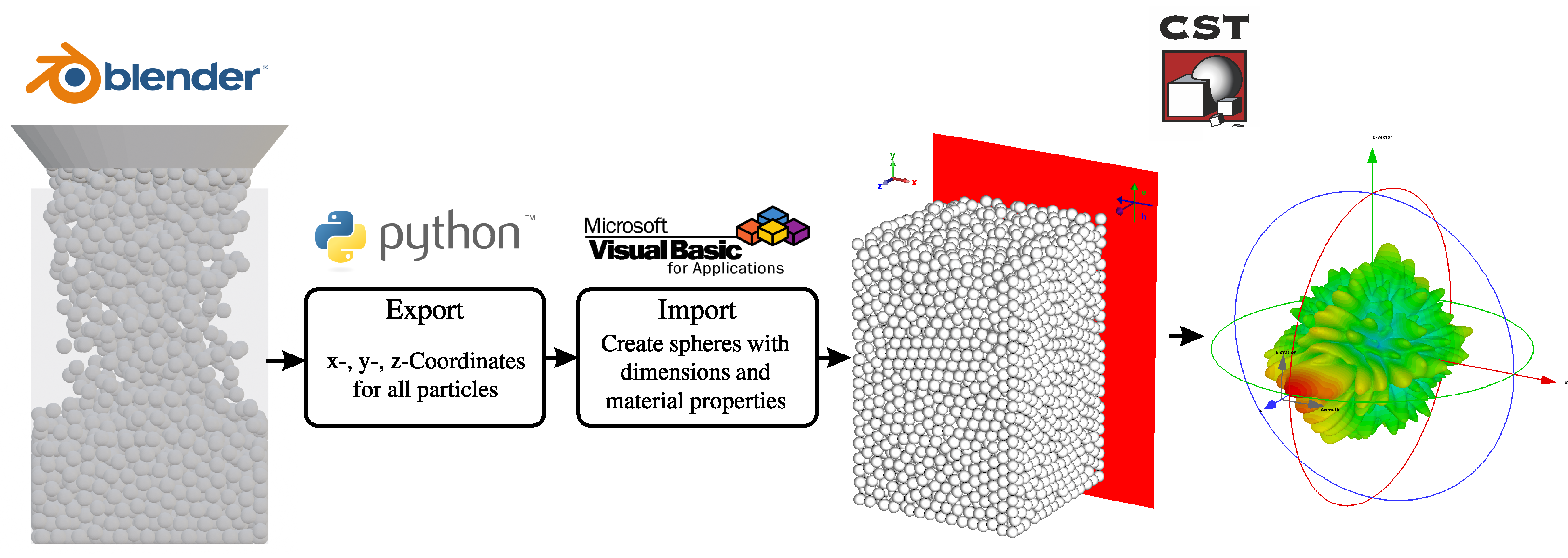

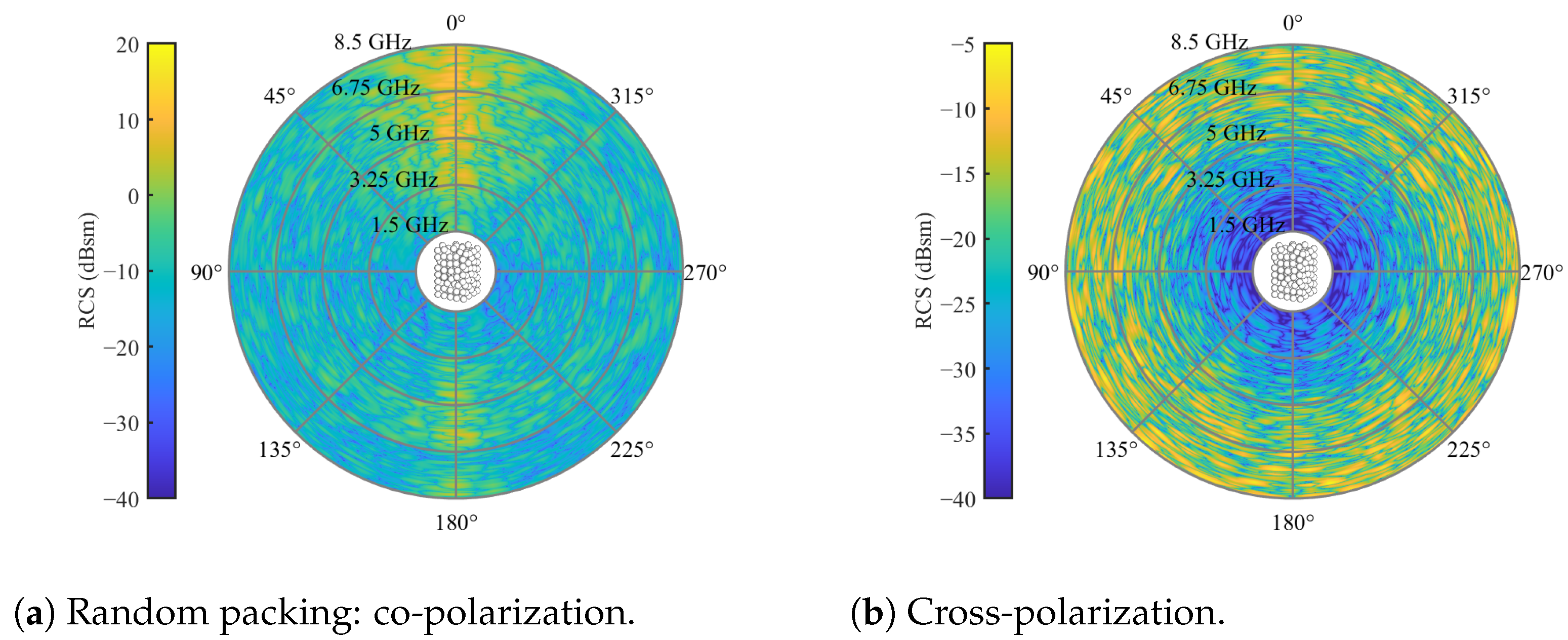
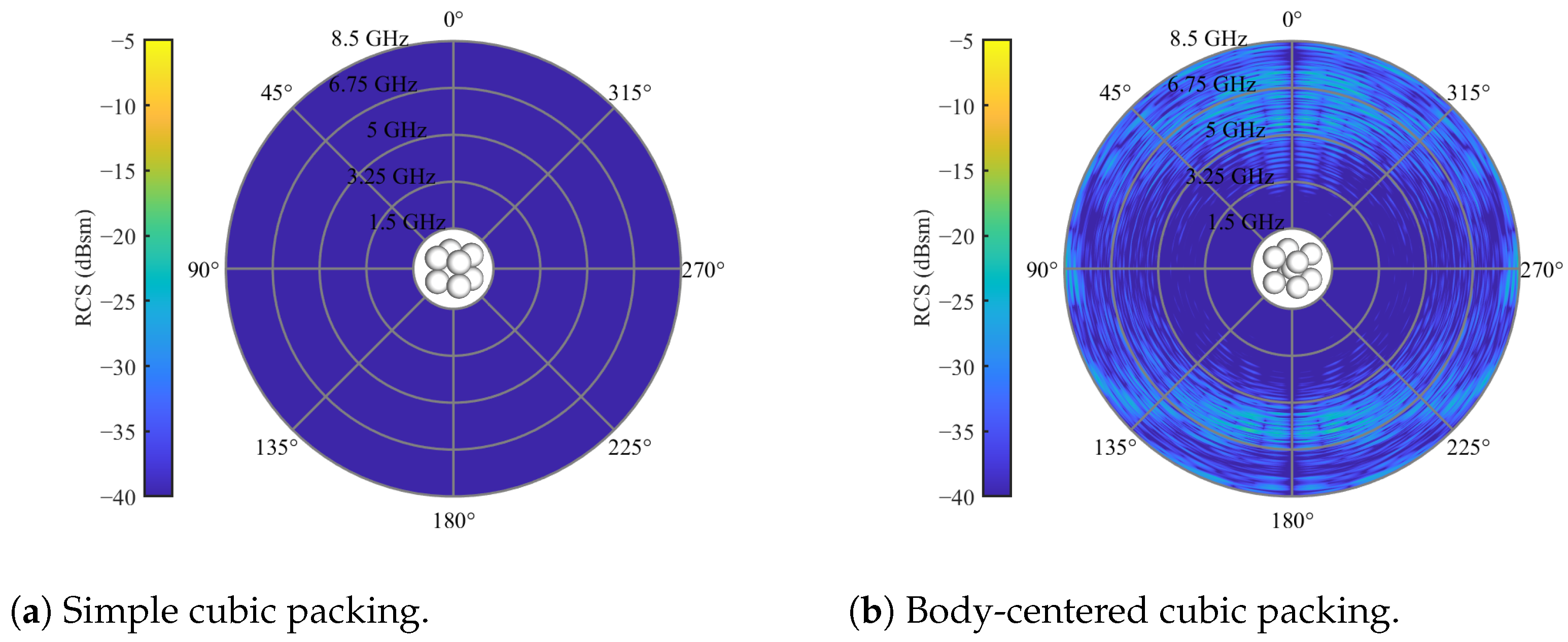
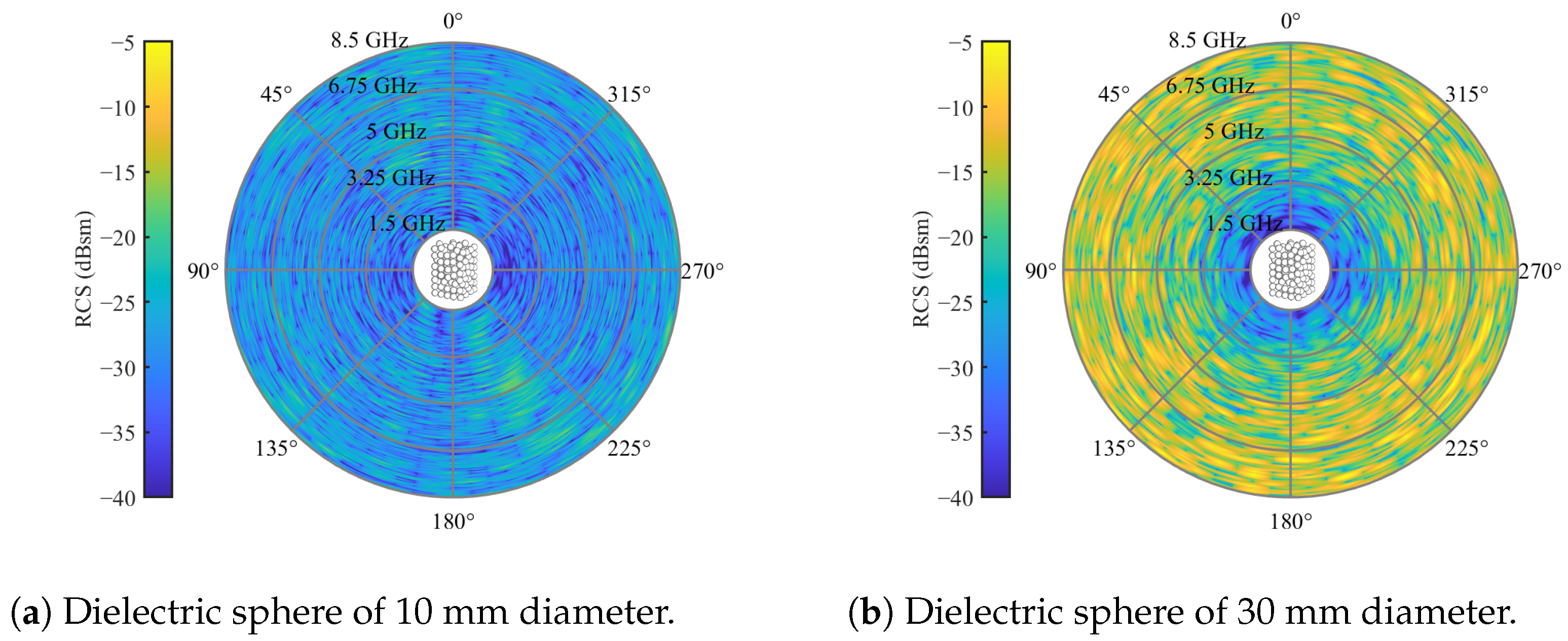

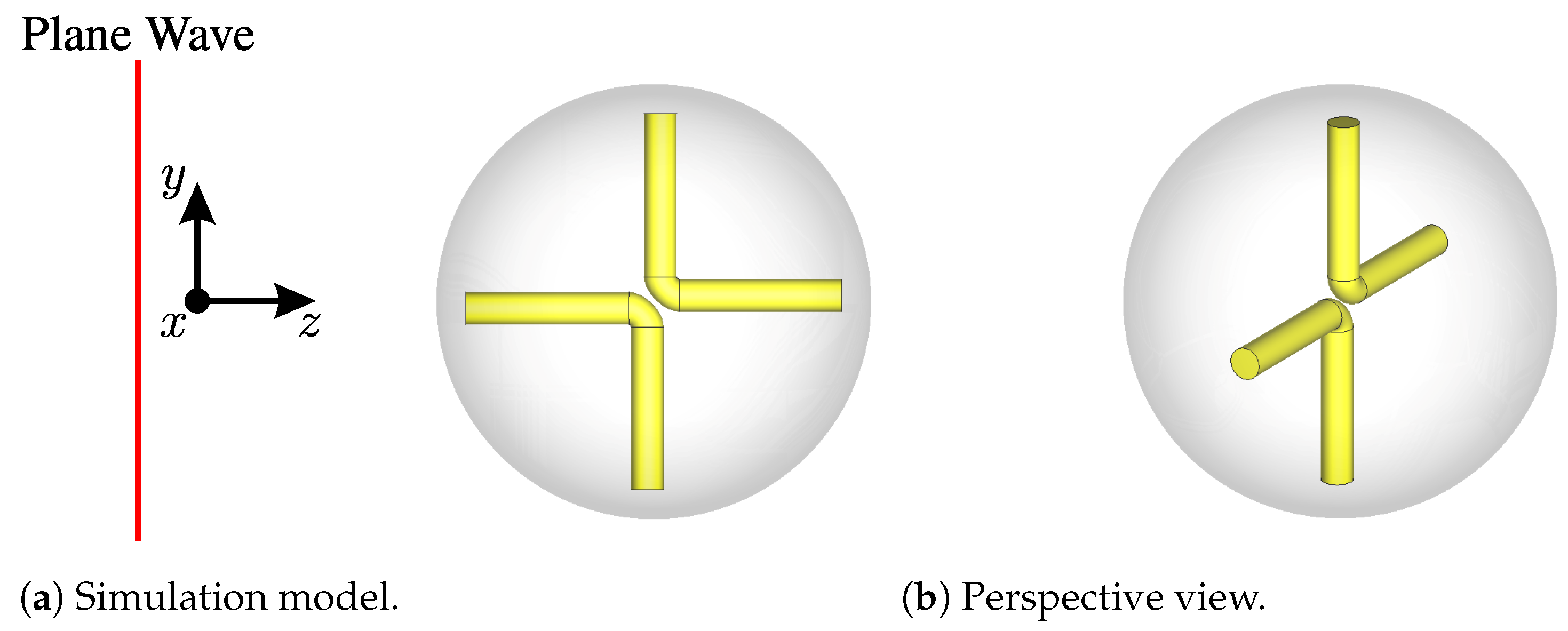


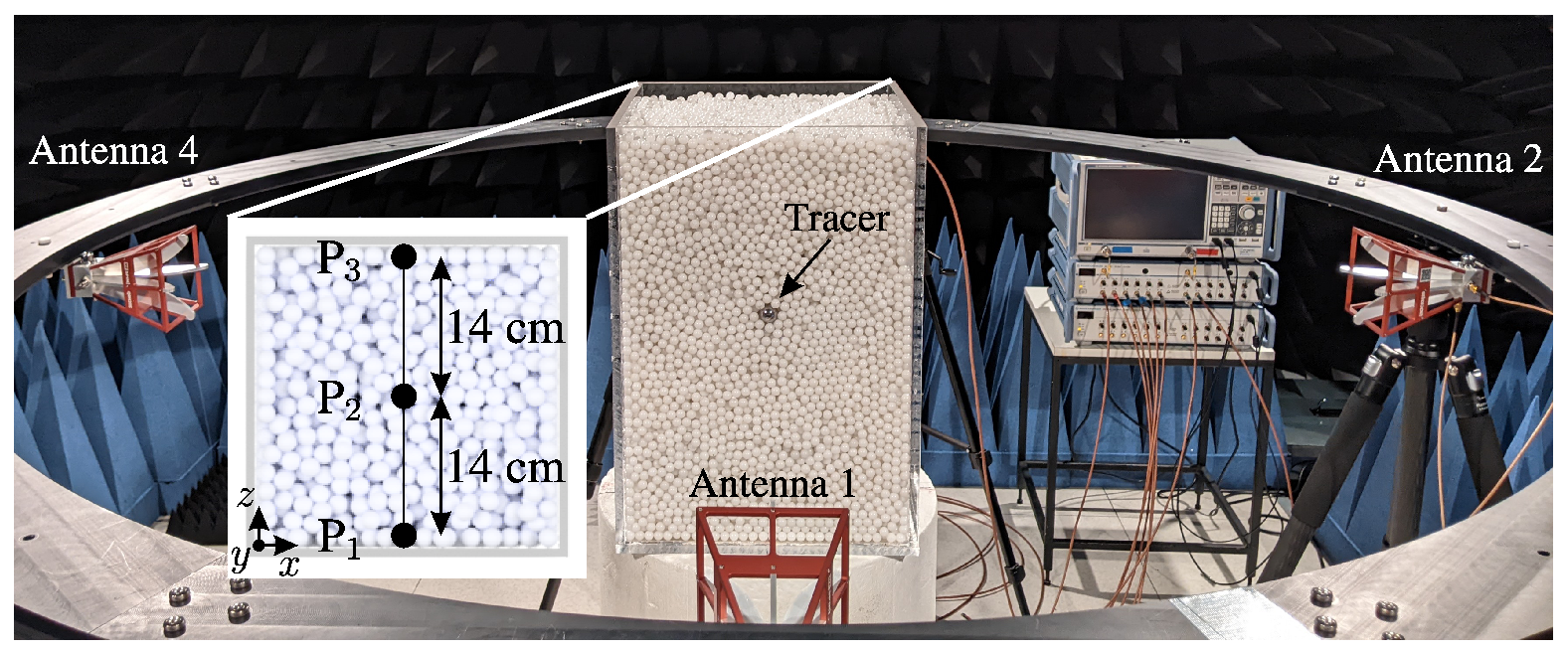
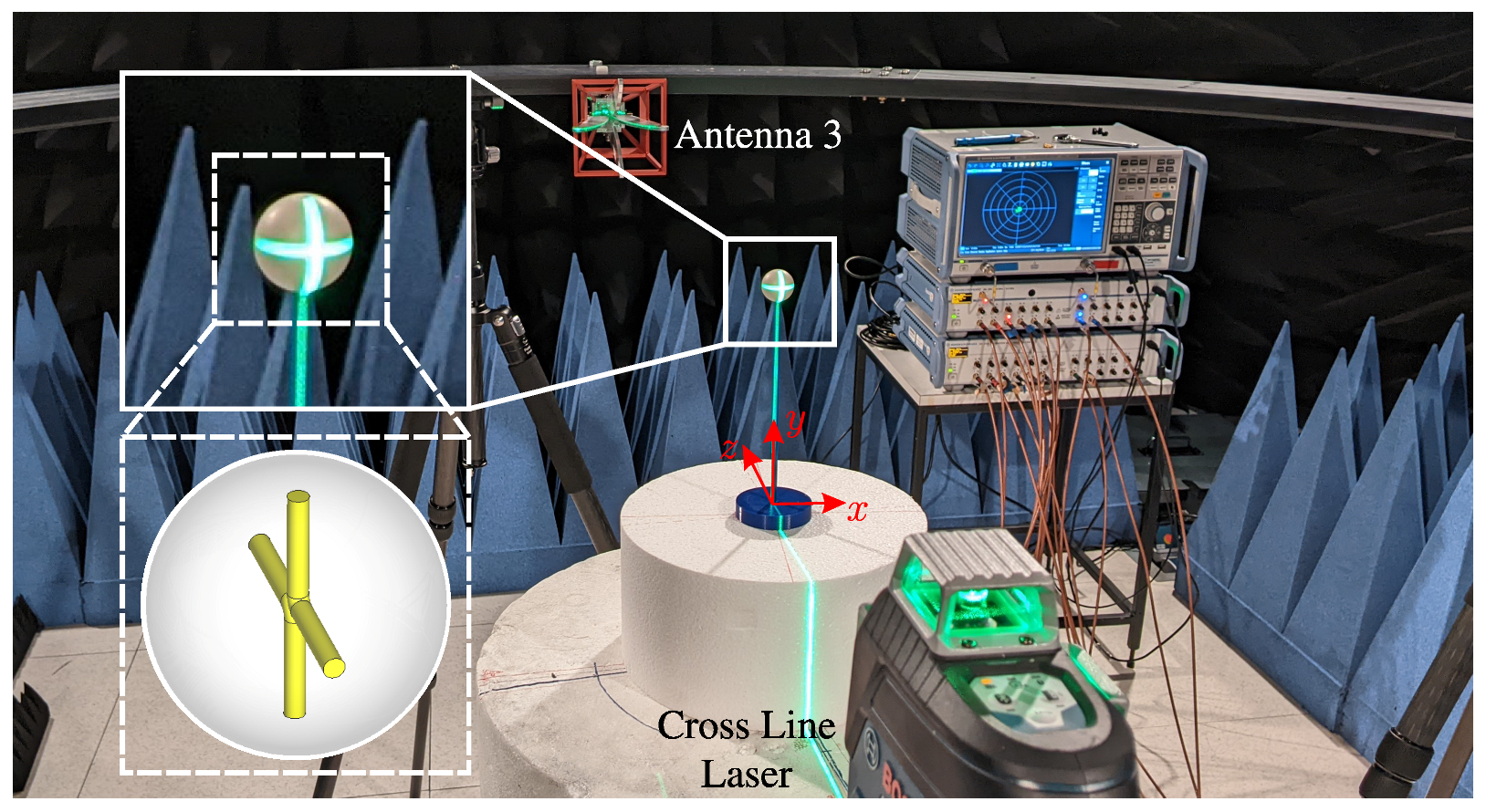
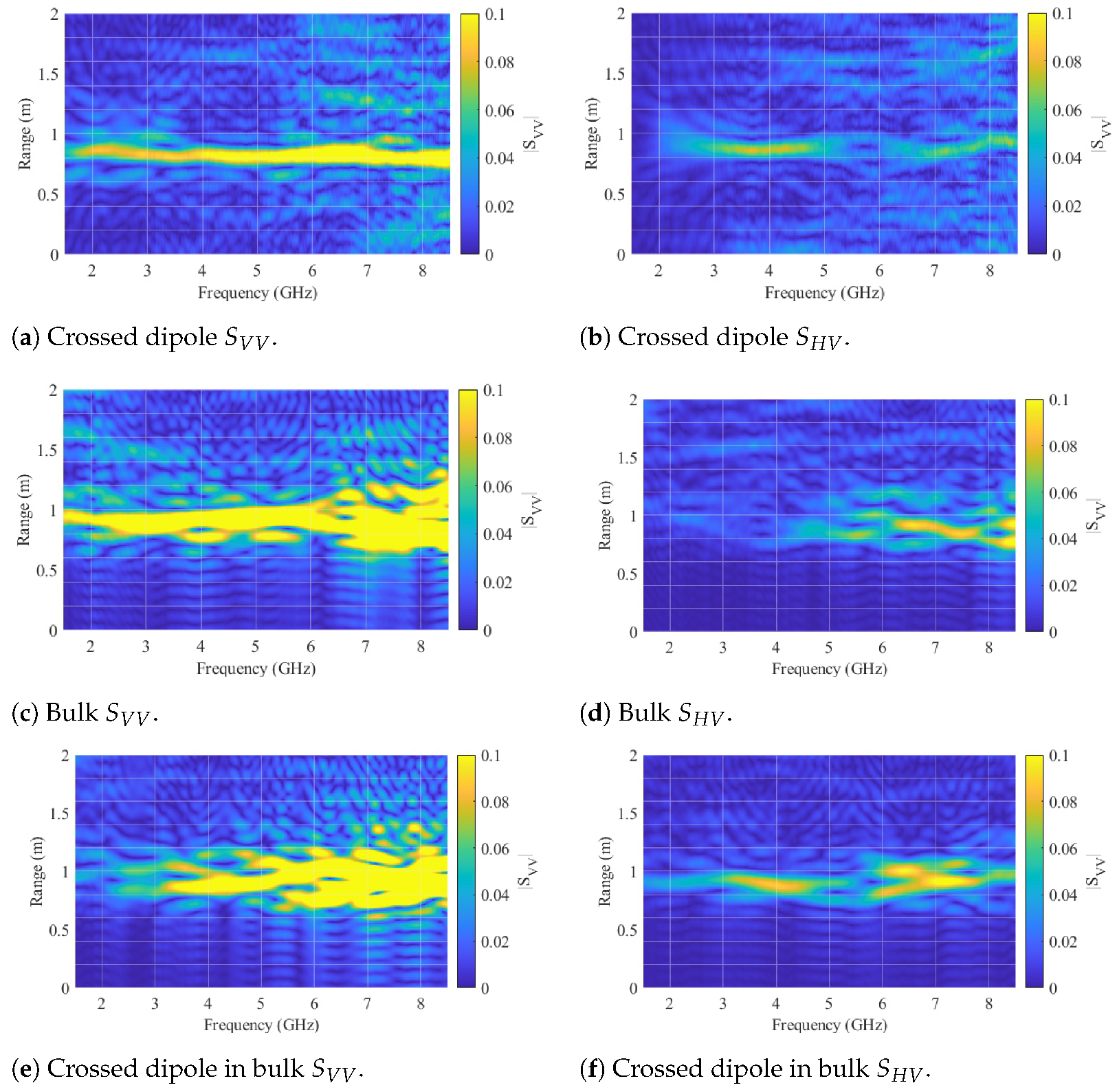

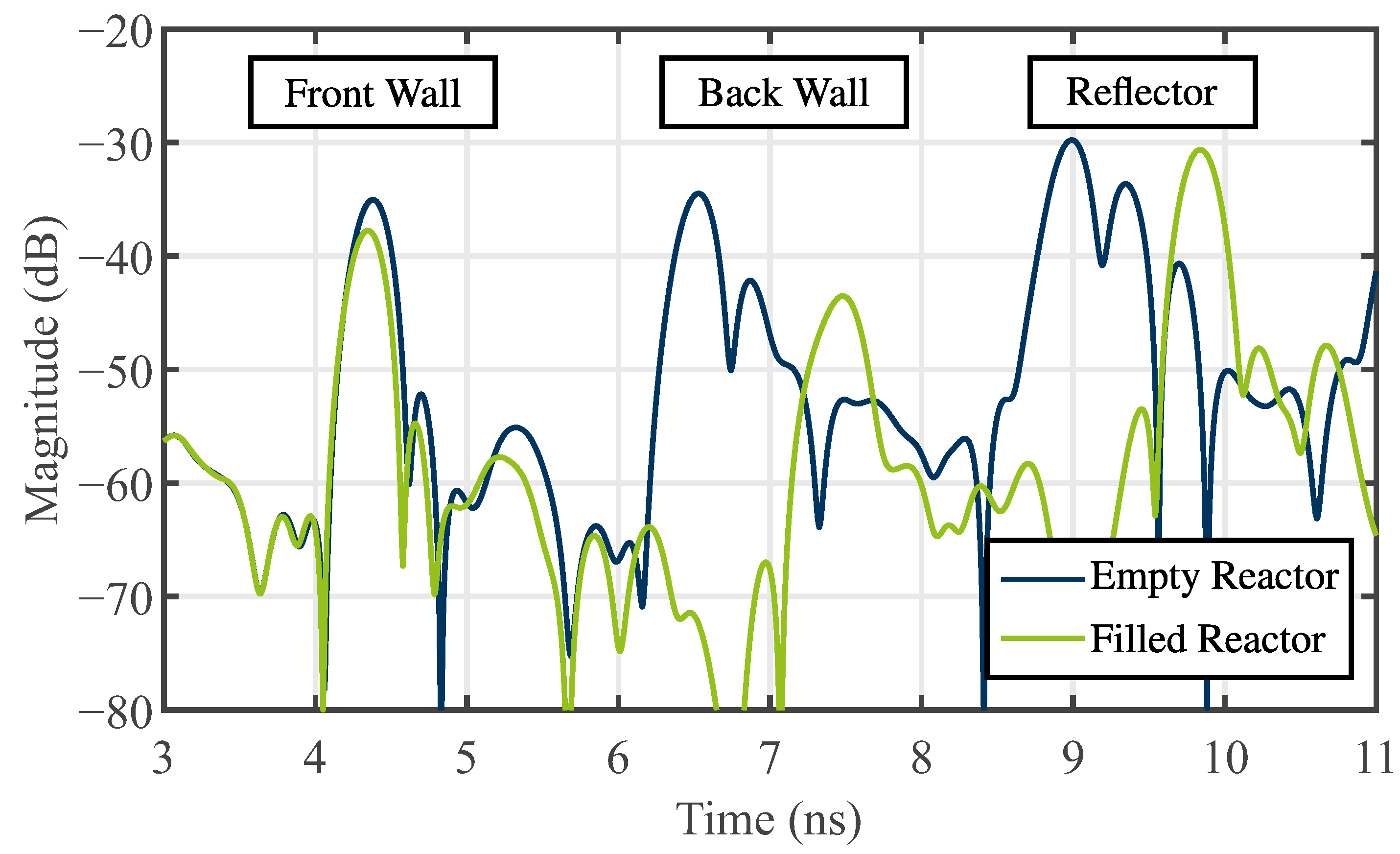
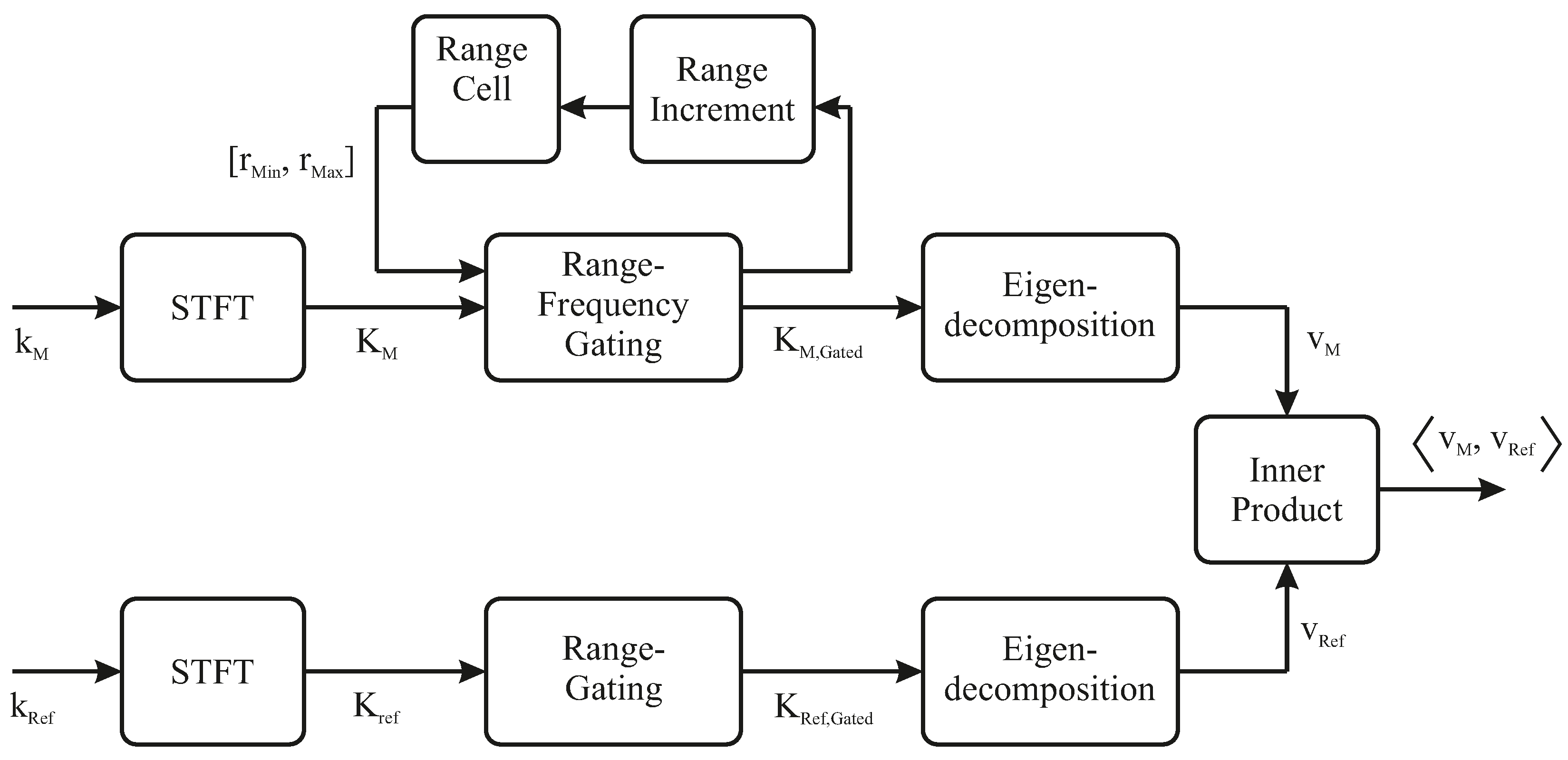

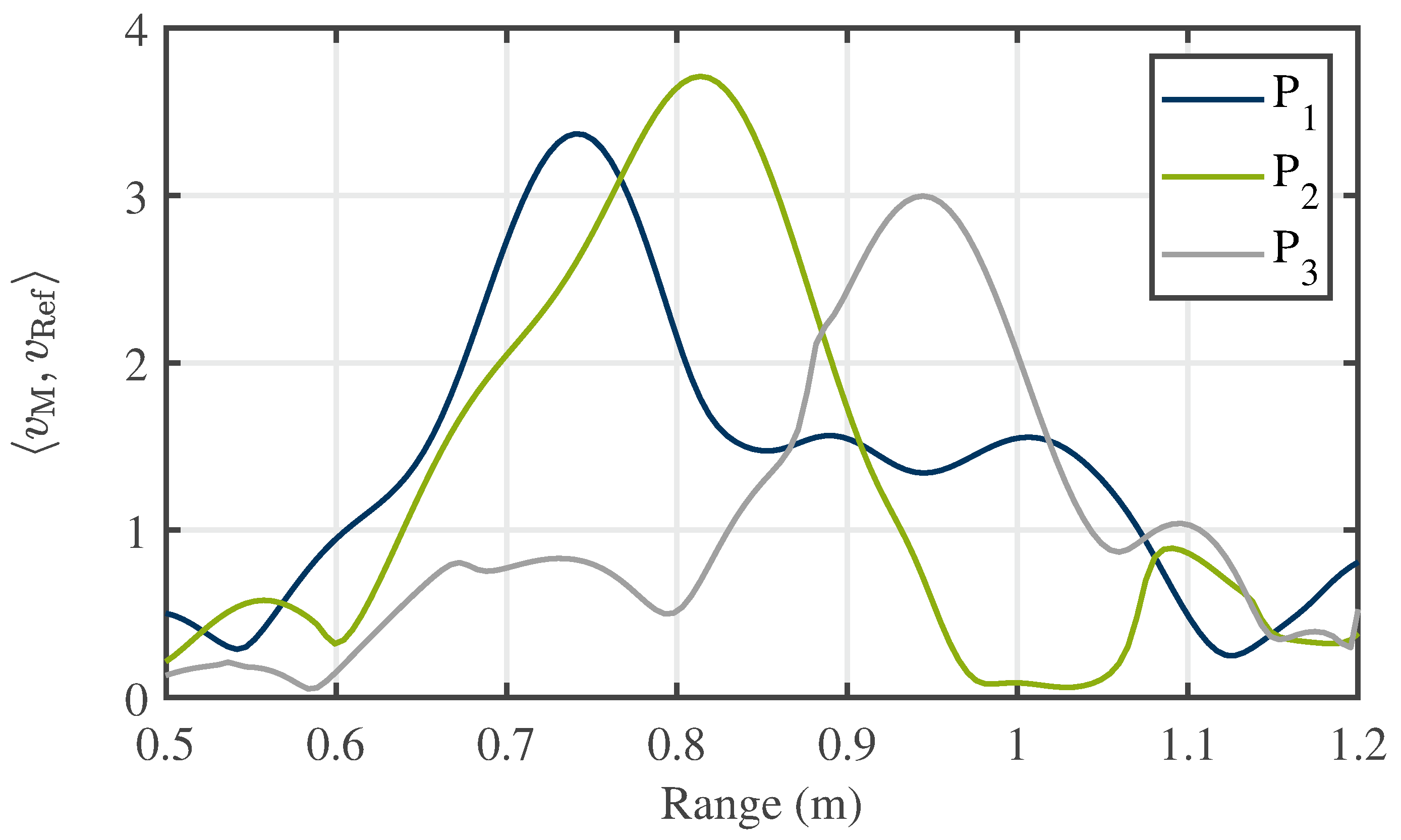
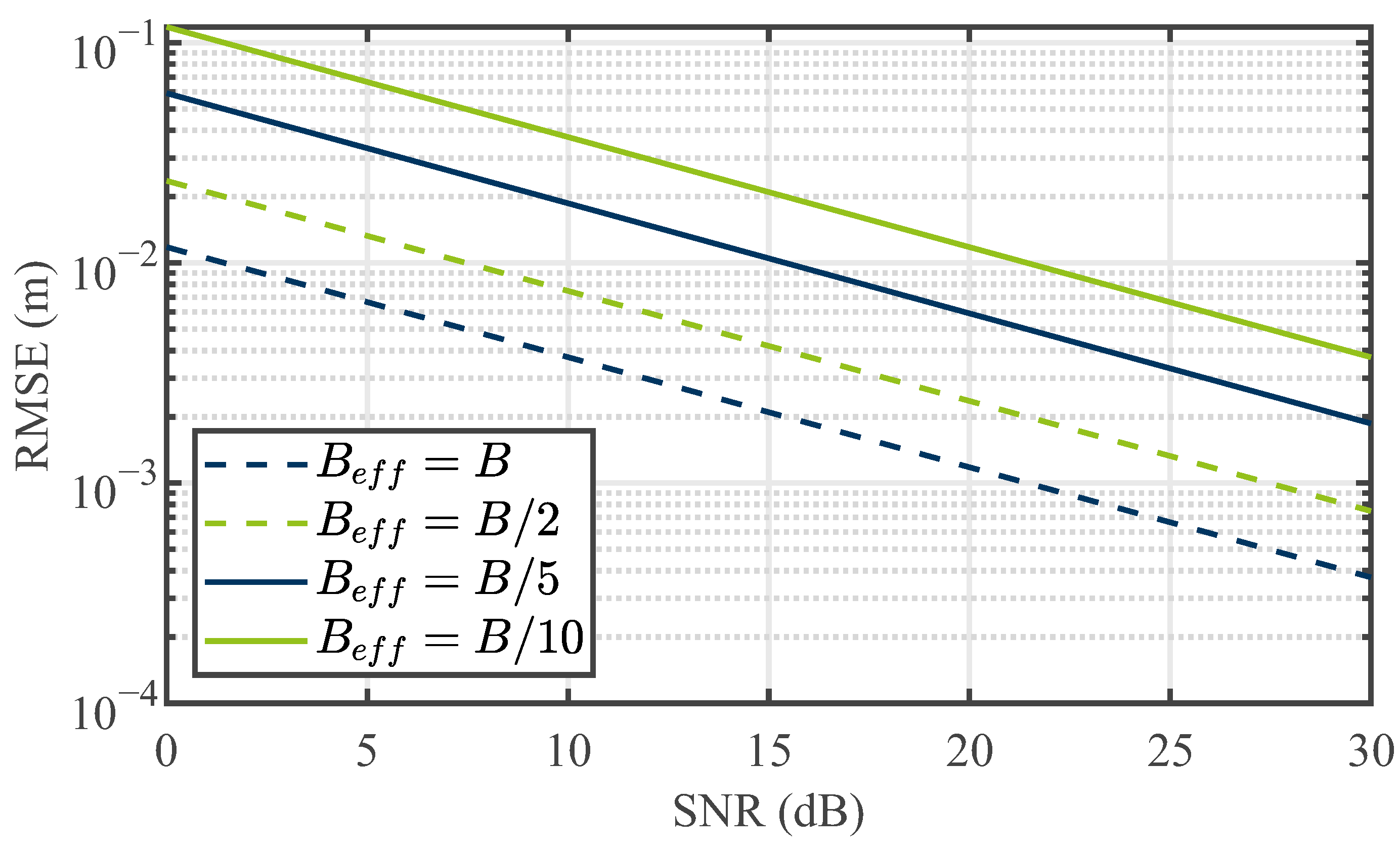
| Target Position | Monostatic Range | Bistatic Range |
|---|---|---|
| w/o bulk | cm | cm |
| w/o bulk | cm | cm |
| w/o bulk | cm | cm |
| w/ bulk | cm | cm |
| w/ bulk | cm | cm |
| w/ bulk | cm | cm |
Disclaimer/Publisher’s Note: The statements, opinions and data contained in all publications are solely those of the individual author(s) and contributor(s) and not of MDPI and/or the editor(s). MDPI and/or the editor(s) disclaim responsibility for any injury to people or property resulting from any ideas, methods, instructions or products referred to in the content. |
© 2024 by the authors. Licensee MDPI, Basel, Switzerland. This article is an open access article distributed under the terms and conditions of the Creative Commons Attribution (CC BY) license (https://creativecommons.org/licenses/by/4.0/).
Share and Cite
Hattenhorst, B.; Karsch, N.; Musch, T. Enhanced Tracer Particle Detection in Dynamic Bulk Systems Based on Polarimetric Radar Signature Correlation. Sensors 2024, 24, 2673. https://doi.org/10.3390/s24092673
Hattenhorst B, Karsch N, Musch T. Enhanced Tracer Particle Detection in Dynamic Bulk Systems Based on Polarimetric Radar Signature Correlation. Sensors. 2024; 24(9):2673. https://doi.org/10.3390/s24092673
Chicago/Turabian StyleHattenhorst, Birk, Nicholas Karsch, and Thomas Musch. 2024. "Enhanced Tracer Particle Detection in Dynamic Bulk Systems Based on Polarimetric Radar Signature Correlation" Sensors 24, no. 9: 2673. https://doi.org/10.3390/s24092673





